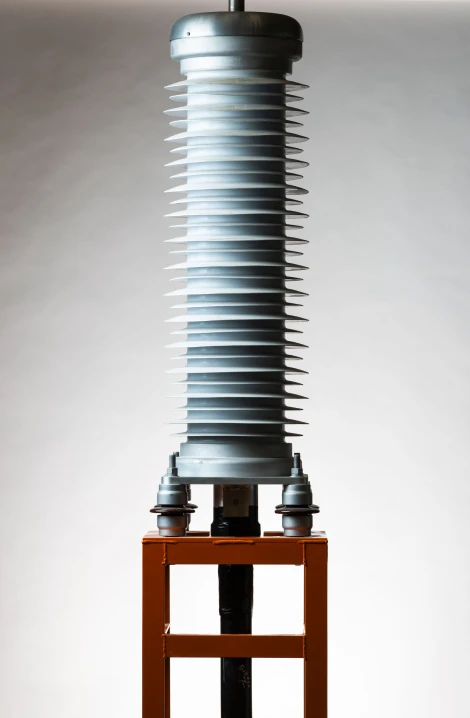Have you ever pushed a swing at just the right moment, causing it to soar higher with each push? This simple act illustrates the concept of resonance. In electrical engineering, resonance testing leverages this same principle to evaluate the condition of high-voltage cables and ensure their reliability.
The Swing Analogy: Understanding Resonance
Consider a swing: it has a natural rhythm, or frequency, at which it moves back and forth. When you push the swing at this natural frequency, you amplify its motion, adding energy at precisely the right moment. This reinforcement enhances the swing’s movement. The same concept applies to high-voltage cables during resonance testing.
The Natural Rhythm of a Swing: How Length and Weight Matter
The natural rhythm of a swing, or its natural frequency, is determined by two main factors: the length of the swing and the weight of the person (or object) on it.
- Length of the Swing: The longer the swing, the slower its natural rhythm. This is because a longer swing has a larger arc to move through, which takes more time to complete. On the other hand, shorter swings have faster, more frequent movements. Mathematically, the time for one full swing (the period) increases with the square root of the length. So, doubling the length of the swing means it will take longer to move back and forth.
- Weight of the Swinger: Interestingly, the weight of the person on the swing doesn’t significantly affect the natural frequency. Whether a child or an adult is on the swing, the rhythm remains mostly unchanged. This happens because gravity affects both the force required to move the swing and the resistance it encounters in equal measure.
This principle — that the natural rhythm is primarily determined by length, while weight has little effect — also applies to resonance in high-voltage cables. Their natural frequency is dictated by their physical characteristics, just like the swing.
Resonance Testing in High-Voltage Cables
Similar to the swing, high-voltage cables possess a natural frequency — the specific rate at which they vibrate or resonate. In resonance testing, an electrical signal is applied to match the cable’s natural frequency. This process helps engineers assess the cable’s overall condition and detect potential problems.
How Does Resonance Testing Work?
- Determine Natural Frequency: The natural frequency of a cable depends on its physical attributes, such as length, diameter, and material composition.
- Apply Signal: A specialized instrument generates and applies an electrical signal tuned to the cable’s natural frequency.
- Monitor Response: The cable’s response to this signal is closely monitored. Any deviations or abnormalities in the response can signal underlying issues.
Why is Resonance Testing Important?
Resonance testing is vital for maintaining the safety and performance of high-voltage cables. It helps detect issues early, allowing for preventative maintenance that can avoid costly outages or failures. This testing method can uncover:
Key Issues Identified by Resonance Testing
- Defects: Detect cracks, voids, or physical flaws in the cable insulation.
- Weaknesses: Identify areas of the cable that are more prone to failure.
- Aging: Reveal signs of wear or degradation from heat, moisture, or mechanical stress over time.
Benefits of Early Detection Through Resonance Testing
By identifying defects and weaknesses early, maintenance teams can take timely action to reinforce or replace problematic sections, ensuring the continued operation of critical electrical systems. This helps minimize unplanned downtime and improves the overall safety and efficiency of electrical infrastructure.
Would you like to rent one of our resonance testers? Contact us here.
Conclusion: Ensuring Reliable Electrical Systems with Resonance Testing
Resonance testing is a powerful technique for assessing the health of high-voltage cables. By applying the principles of resonance, engineers can identify potential problems before they lead to failures, ensuring the reliability, safety, and efficiency of electrical systems.
Read more about the manufacturer here.
FAQ
Resonance testing is a method used to evaluate the condition of high-voltage cables by applying an electrical signal at the cable’s natural frequency. This helps engineers detect defects, weaknesses, or aging in the cables, ensuring reliability and safety.
The natural frequency of a swing is largely influenced by its length. A longer swing has a slower, more extended movement, while a shorter swing moves more quickly. This is similar to how physical characteristics determine the resonance of high-voltage cables.
Resonance testing is crucial because it helps identify issues like cracks, insulation damage, or aging in high-voltage cables. Early detection allows for preventive maintenance, reducing the risk of electrical outages and costly failures.
While the length of a swing influences its natural frequency, the weight of the person on the swing has minimal effect. This is similar to high-voltage cables, where physical properties like length and material play a bigger role in determining their resonance.
Early detection through resonance testing allows maintenance teams to address potential problems before they escalate, leading to fewer disruptions, improved safety, and reduced repair costs in electrical systems.


